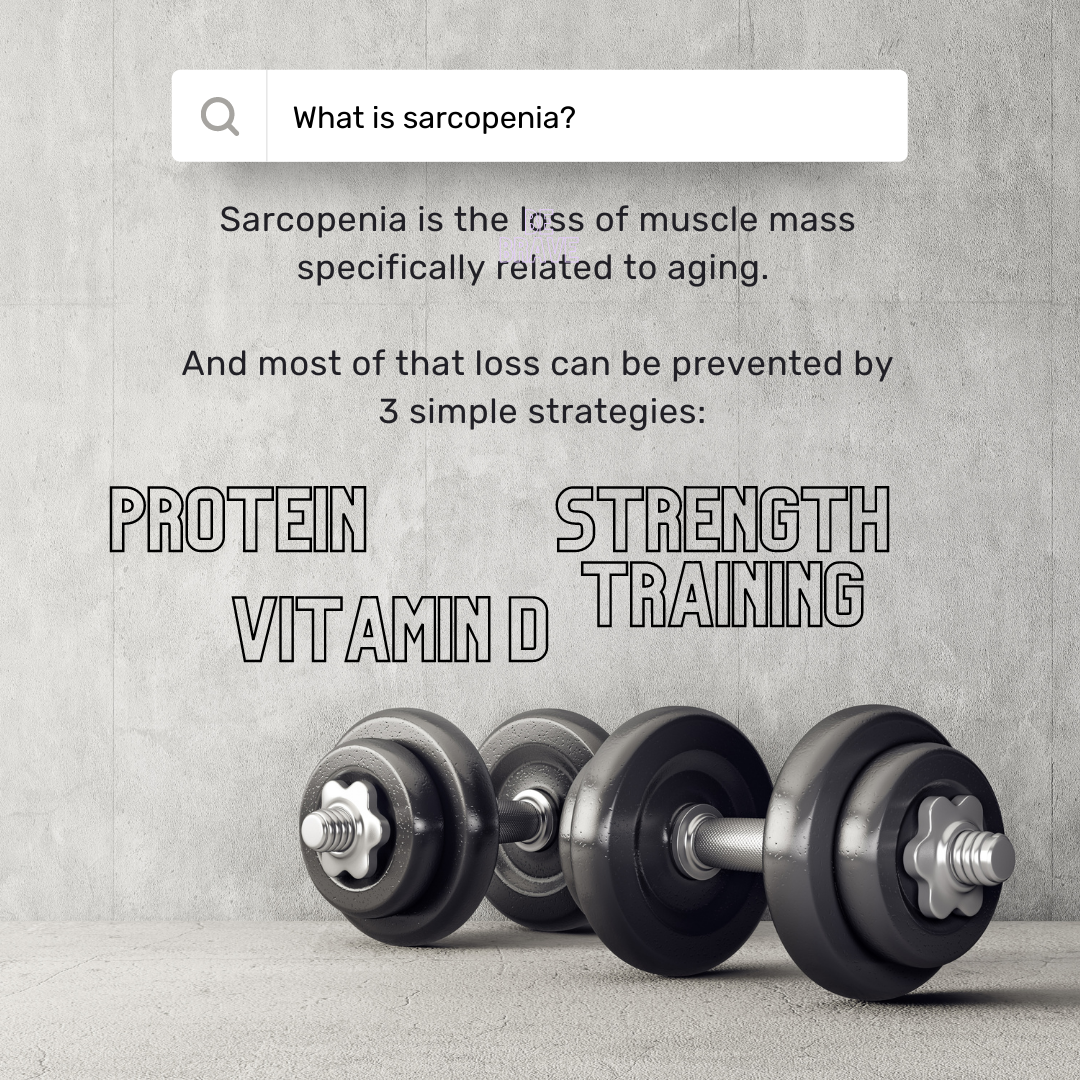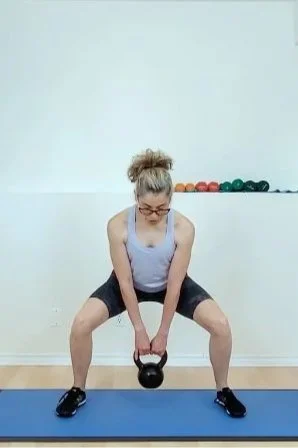What is Sarcopenia and How to Prevent It
Sarcopenia is the loss of muscle mass specifically related to aging. It's normal to lose some muscle mass as we age, but most of this loss is preventable. People with sarcopenia often experience weakness and decreased stamina, which affects their ability to carry out daily activities. A reduction in activity leads to further muscle mass loss. Decreased muscle also negatively affects metabolism and is associated with increased body fat. Muscle loss starts around the age of 35, unless we do something about it. The key is to stay physically active throughout ones life.
According to a 2019 study (referenced here), sarcopenia can be reduced by diet and purposeful physical activity:
Protein Intake
Consuming enough dietary protein directly signals muscle tissue to grow and strengthen. The ability to digest and absorb protein decreases as we age. It’s beneficial to monitor protein intake and ensure you are consuming enough. If you are not consuming enough dietary sources of protein, the referenced study states that protein shakes are an excellent alternative.
The American College of Sports Medicine (ACSM) recommends 1.2-2g of protein per kg of body weight. I recommend aiming for the higher amount as new studies show more protein may be better. For example: I weigh 128lbs (58kg x 2.2 =128lbs), so I need at minimum 70g of protein daily, and upwards of 116g of daily protein to maximize benefits.
Vitamin D Intake
Vitamin D is an important hormone in cell management. Vitamin D deficiency is related to sarcopenia; however, the exact reason why is not particularly clear. More research is required to investigate the correlation between the two. The study also indicates that another supplement that aids in muscle growth and lowering inflammation is omega-3 fatty acid.
Physical Activity
Cardiovascular training is important to strengthen the heart and lungs, and resistance training is most beneficial to increase balance, coordination, strength, stamina, and muscle mass. If your goal is to build your body strong and resilient resistance training 2-3 times weekly needs to be a priority. Pilates apparatus uses springs and body weight to create the resistance needed to challenge muscles effectively. Study indicates that resistance training can also help balance your hormone levels and improve the ability to turn protein into energy in older adults.
The MRI imaging below shows the cross-sectional area of the upper leg. It’s a great illustration that if you don't use it, you lose it:
In the above images, we see that a 40-year-old and 70-year-old triathlete have maintained a good amount of lean muscle mass in their legs. They also have very little adipose tissue (fat), keeping them at a healthy body composition. Triathetes main source of physical activity is swimming, cycling, and running. With cycling in particular, there is enough load on the legs to develop a good amount of strong muscle. The 74-year-old sedentary man has an alarmingly low amount of muscle, which will increase his risk of falls due to lack of strength.
Studies (referenced here) have discovered that constant exercise over one’s life preserves lean muscle mass. This is so amazing because it contradicts the common observation that muscle mass and strength decline is a function of aging alone. Instead, these declines are the effect of disuse rather than muscle aging. Maintenance of muscle mass and strength may decrease or eliminate falls, functional decline, and loss of independence that are commonly seen in aging adults.
While there are several variables to consider when building muscle (such as metabolic stress, mechanical stress, and muscle damage), a key part is to make sure the exercise is challenging enough that your muscles go to near failure, meaning you finish your set when you feel like you can only perform 2-5 more reps with good form. You can use time (where you keep going until you reach near fatigue) and/or load (increase the challenge of the resistance).
Let’s use the example of building strong gluteal muscles (the butt). There are so many amazing modes of physical activity you can do to build this muscle group.
Cycling, especially uphill, is one example.
Sumo Deadlifts with a kettlebell is another example of a great exercise targeting the glutes.
And everyone’s favourite :D are Up Downs (aka Step Ups) on the Wunda Chair in our Pilates Apparatus classes here at this studio.
Photo credit: Meg Kristina Photography
A variety of exercises can you help reach the goal of strengthening your muscles. The key is challenging the muscle group with the right amount of resistance with the right amount of time under tension. It’s recommended to find physical activities you enjoy doing, as studies show people are more consistent with exercise if they like it.
Here at Pilates Life Studio we implement evidence-based science to all our sessions, considering all variables to appropriately challenge muscle within each client’s current level of ability. Trust you are in very good hands here at the studio!
Resources:
https://www.healthline.com/health/sarcopenia
Gao-Balch Y, H. “Sarcopenia Reversible by Diet.” Diabetes Updates, vol. 5, no. 4, 2019. DOI.org (Crossref), https://doi.org/10.15761/DU.1000133.
Wroblewski AP, Amati F, Smiley MA, Goodpaster B, Wright V. Chronic exercise preserves lean muscle mass in masters athletes. Phys Sportsmed. 2011 Sep;39(3):172-8. doi: 10.3810/psm.2011.09.1933. PMID: 22030953.





